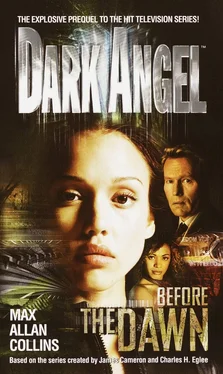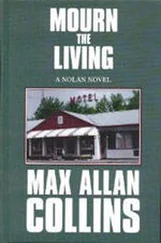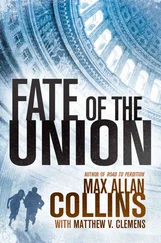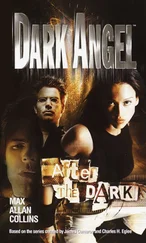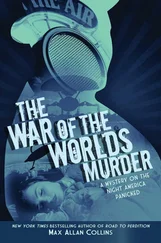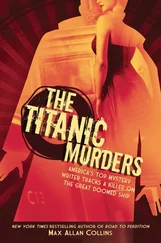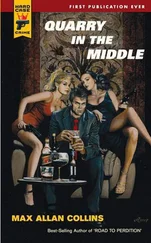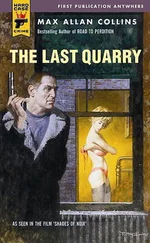Max knew a great deal about art, artists, jewelry, antiques, collectibles... hell, she even knew the value of baseball cards. Moody had taught her well — not for altruistic reasons, or to broaden her human horizons (at least that had not been the main purpose).
Rather, her Fagin-like mentor knew that LA was a city of collectors, that even after the Pulse, and after the Big Quake, the town brimmed with valuable artifacts. Anticipating this — knowing the Chinese Clan might from time to time encounter any number of priceless objects on their various larcenous forays — Moody had made sure he was trained to recognize the finer things, and — as he was more and more not accompanying his kids on their capers — had methodically passed this knowledge along to Max.
A quick study, Max had devoured the material given her by Moody and sought out even more; she told herself her motivation was practical, but art nonetheless stirred something within her.
And it got to where she could walk into any antique shop in LaLa-land and know, in a glance, what was worth stealing and what wasn’t. She had known, just looking at it, that the Heart of the Ocean was no fake; the level of security alone would have been a tip-off, but the stone itself had spoken to Max, telling her it was the real deal.
She’d done her on-line homework on Jared Sterling, the painting, and the place where Sterling now kept it; much of the information could have been discovered by anyone with a Comsat link. But to a Manticore-trained hacker like Max, the cyberworld was an oyster coughing up one Internetted pearl after another...
Fittingly enough, it seemed Sterling had made his money in resurrecting the post-Pulse computer infrastructure. Almost singlehandedly, ol’ Jared had gotten the Internet up and running again, on the West Coast. Only a shadow of its former self in many areas at first, the Net was up, thanks to Sterling, and progress was quickly made.
Being in the right place, at the right time, with the right technology, had given Jared Sterling wealth comparable to the Bill Gates (pre-Pulse, before Gates went famously broke, of course). The hard-hit East Coast states had come sniffing around Sterling, trying to convince him to help them get back into the on-line world; but when they wouldn’t (or perhaps couldn’t) meet his price, and his terms, he’d left them on the outside looking in.
Sterling’s hard-nosed way of doing business — he was often a vicious target of liberal op-ed writers — meant that once the eastern states did come crawling back, to avail themselves of his product and his services, the price would double, if not triple. Sterling had a legendary mean streak, and the country’s major left-wing political magazine, Hustler, had not long ago made him their “Post-Pulse Predator of the Month,” accusing him of having no conscience.
“A lot of businessmen have been called sharks,” publisher Laurence Flynt III opined, “but Sterling is the real thing. Rumor has it, he even has slits tailored into in the back of his thousand-dollar suits, to accommodate his dorsal fin.”
Politics were a blur to Max, of course — all she knew was, Manticore was tied to the federal government; therefore, federal government... bad.
As for the painting, Max already knew Death on the Ridge Road had been created by Wood in 1935. What she found out online was that the work was oil on a Masonite panel, thirty-two by thirty-nine inches... which made it kind of big and unwieldy, for a cat burglar. But the paycheck would more than make up for the hassle factor.
In 1947, Cole Porter, a twentieth-century songwriter, (the online info listed several “famous” song titles, none of which rang a bell for Max) had given the painting as a gift to the Williams College Museum of Art in Massachusetts. After the Pulse, however, Death had disappeared for ten years before turning up, unharmed, on that easel next to Sterling.
The Net magnate only laughed when the media asked where he’d purchased the painting, and waved off any suggestion that it might be stolen property. Such ownership issues had become something of a moot point, after the Pulse, of course.
“I acquired it from a private collector,” was all he would say.
Although none of the media had made a thing out of it, two days after Sterling’s picture had appeared with the Grant Wood, a Miami collector named Johnson washed ashore in the Gulf of Mexico, the victim of an apparent boating accident.
This Max had not discovered online. In fact, that particular piece of information came courtesy of one of her other interests... when, at Jam Pony, as she and Original Cindy were waiting for their next assignment, an Eyes Only broadcast had interrupted SNN headline news on the break-area TV...
“This cable hack will last exactly sixty seconds,” the compelling voice said, as strong, clear eyes stared out from between bands of red and blue at the screen’s top and bottom, over which moving white letters (STREAMING FREEDOM VIDEO) were superimposed. “It cannot be traced, it cannot be stopped, and it is the only free voice left in this city.”
“’Cept for Original Cindy,” Original Cindy said.
Sketchy leaned in. “I dig this guy — he’s intense.”
“He’s just another scam artist,” Max said, pretending to be unimpressed.
“The mainstream media considers this small news. But Eyes Only wonders if there is a connection between the death of art dealer Harold Johnson and the very much alive-and-well art collector, Jared Sterling...”
After driving the boat onto the sand, sliding it up into some bushes, and securing it, the young woman in black made her catlike way up a rolling landscaped lawn to the wall of Jared Sterling’s estate. The fog hadn’t dissipated any, in fact was clinging to the earth like a cloud that lost its way; this would make Max harder to detect on video.
The wall — seven feet of brick topped with video cameras at every corner — proved to be little challenge to Max. She jumped to the top, easily got her footing, hopped down, and landed gently on more grass. Listening closely, she heard only silence, saw merely the general shape of the castlelike house in the fog.
Edging low along the wall, she avoided the cameras even though she felt sure they couldn’t catch her in this soup unless she was on top of one. It was a hundred yards across a pool-table green lawn — no slope, now, nice and flat — to the looming tan-brick house, and Max covered the turf quickly, making time an Olympic runner would have envied.
She had half expected dogs, but she sensed no animal presence: canines would have made her cat’s nose twitch. Her only other real fear... make that, apprehension... would be motion detectors that might trigger yard lights. Nothing. And the only lights on in the entire immense house were in two windows on the first floor in the back.
Security room, Max thought.
Up close, the three-story house seemed huge. An article in the on-line Architectural Digest said the place had seven bedrooms, two kitchens, and four bathrooms; a carriage house on the opposite side of the estate housed Sterling’s full-time ten-man security team (this fact she had hacked from the security company’s Web site, having learned their I.D. from info lifted from the Sterling Enterprises official Web site). Eight-foot evergreens stood between the windows like giant green sentinels. Centered on the near side of the house were French doors with two windows on either side, the whole thing wired to that security room in the back of the mansion.
She wouldn’t be going in this way.
Most home invaders avoided the one point of entry that wouldn’t start sirens screaming and or bells clanging, the moment it got popped: the front door.
Читать дальше
